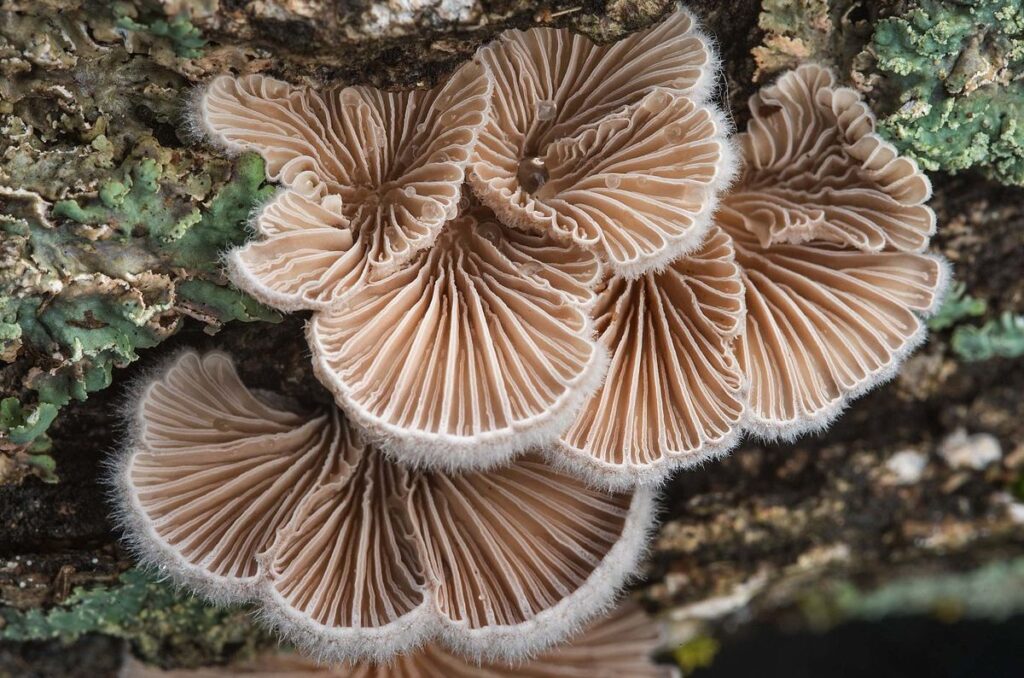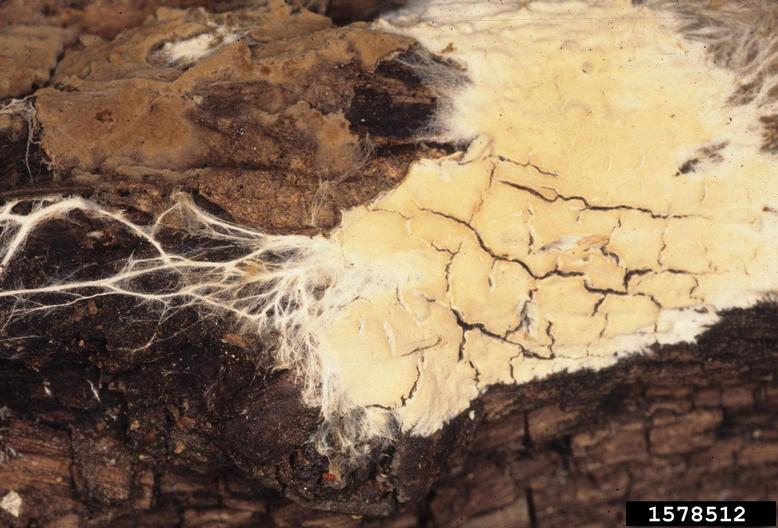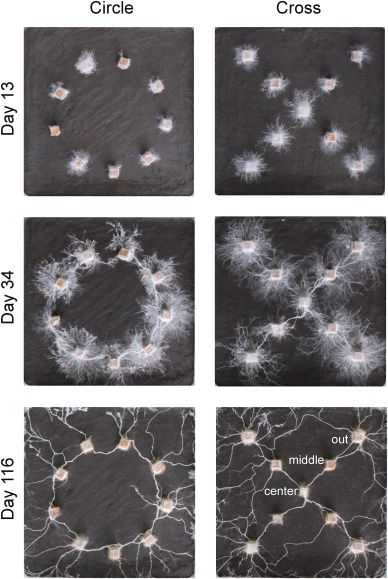
20 October 2024
This week the Good News Network reported on a study published in ScienceDirect that shows fungi perceive shapes in the world around them, have memories, make decisions and solve problems. All without a brain!
A Japanese study of fungal networks set up an experiment with wood cubes pre-colonized with a wood decaying fungus, Phanerochaete velutina. The fruiting body and mycelia are shown below.

The scientists laid the cubes on a bed of clean soil in two patterns, a circle and an X, then observed and photographed what happened over a period of months.

- By Day 13 the fungi had grown filaments (hypha) that made the cubes look fuzzy, particularly in the X shape. (hypha are collectively called mycelia)
- By Day 34 some filaments from each cube had joined with the mycelia of neighboring cubes, but the rest of the hyphae were still seeking so the shapes were super fuzzy.
- By Day 116, almost four months later, the “chatter” had subsided and the fuzzies were mostly gone in favor of strong, efficient networks.
Over time it became obvious that the fungi were not acting randomly. They remembered shapes and were making decisions.
If the fungi didn’t display decision-making skills, they would simply spread out from a central point without consideration for the position of the blocks.
For the X arrangement, the degree of mycelial colonization was greater in the outermost four blocks. It was hypothesized that this was because the outermost blocks can serve as “outposts” for the mycelial network to embark on foraging expeditions, therefore more dense connections were required compared to the five blocks inside the X.
In the circle arrangement, the degree of mycelial colonization was the same at any given block. However, all the empty space inside the circle remained clear. It was proposed that the mycelial network did not see a benefit in overextending itself in an already well-populated area.
— Good News Network: Scientist Shows Fungi Are ‘Mind-blowing’: They Have Memories, Learn Shapes, Can Make Decisions and Solve Problems
In order to optimize their patterns the fungi must be communicating through the network. That’s where the beautiful split gill mushroom (Schizophyllum commune), shown at top, comes in.
Two years ago a study of electrical signals in the filaments (hypha) of enoki, split gill, ghost and caterpillar fungi discovered that their signals pulse when there’s something important to say such as “Found a new source of food.” Sometimes the pulses were similar to words and it appeared that the fungi knew 50 “words.”(*)
Read more about the “word” study at Good News Network: Research Suggests Mushrooms Talk to Each Other With a Vocabulary of 50 ‘Words’(*) See the source publication at Royal Society of Open Science: Language of fungi derived from their electrical spiking activity.
(*)NOTE: Some skepticism was reported at the end of the Good News Network “words” article:
Some scientists are skeptical that the research was done looking for ‘language’, suggesting that this puts a shroud of exaggeration and overexcitement about the findings.
To his credit, Adamatzky explained to the Guardian that it could be simply that the electrically-charged tips of hyphae were just creating electromagnetic reactions as they explore the forest underground.
— Research Suggests Mushrooms Talk to Each Other With a Vocabulary of 50 ‘Words’